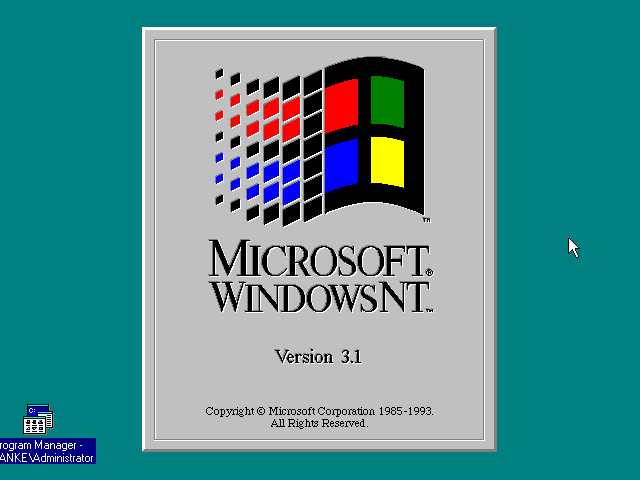History of Computers - Windows NT
Introduction
Windows NT (or New Technology, although not officially), is a Microsoft operating system with advanced capabilities released in 1993 as Windows NT 3.1. It can also refer to the family of NT operating systems, which includes all releases from NT 3.1 to Windows 10. It was originally made for workstations and servers, but developed into consumer versions for personal computers.[1]
Overview
Windows NT is a processor-independent operating system with multiprocessing and multi-user capabilities. It is the first entirely 32-bit version of Windows and supports multiple architectures, such as IA-32, MIPS, DEC Alpha, and PowerPC. It now also supports x86-64 and ARM. NTFS (New Technology File System) was also created for Windows NT, although it could still be installed on FAT file systems. The OS was written in C and C++. Initially developed with IBM, the partnership fell apart and each developed it on their own, with Microsoft continuing with Windows NT and IBM continuing with OS/2.[3] In the end, Microsoft’s version ended up beating OS/2 in terms of popularity, essentially securing Microsoft’s supremacy in operating systems.
List of Windows NT releases: Version Name Year Released
- 3.1 Windows NT 3.1 1993
- 3.5 Windows NT 3.5 1994
- 3.51 Windows NT 3.51 1995
- 4.0 Windows NT 4.0 1996
- 5.0 Windows 2000 2000
- 5.1 Windows XP 2001
- 5.2 Windows XP 64-bit 2003
- 6.0 Windows Vista 2007
- 6.1 Windows 7 2009
- 6.2 Windows 8 2012
- 6.3 Windows 8.1 2013
- 10.0 Windows 10 2015
Significance
Windows NT represents Microsoft’s first 32-bit operating system offering, a significant advance in technology. NTFS, the file system created for Windows NT, is also still in use today with the newest versions of Windows. It is the basis for every Windows version currently available, including the new Windows 10, and offered many new features, such as its own driver model, file manager, and program manager. Since Windows XP (or 5.2) the operating system has been 64-bit capable, another huge step in computer technology. It is widely usable, and can even be run on ARM based platforms (e.g. Windows RT). NT has influenced the operating system used by billions of people worldwide for many years, and secured Microsoft’s dominance over IBM in the operating system arena.
By Austin Schultz
